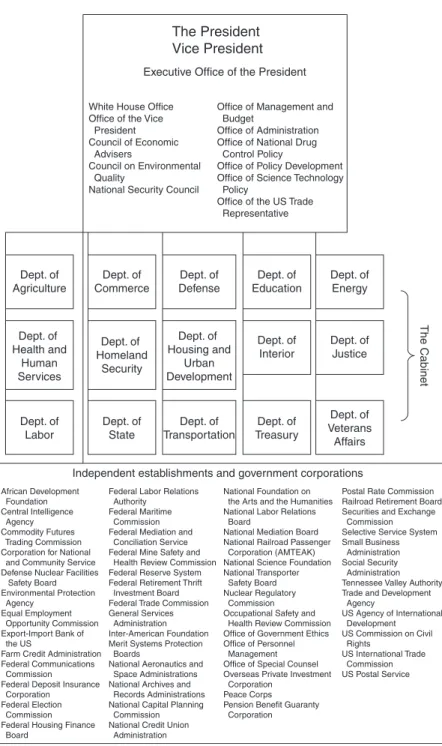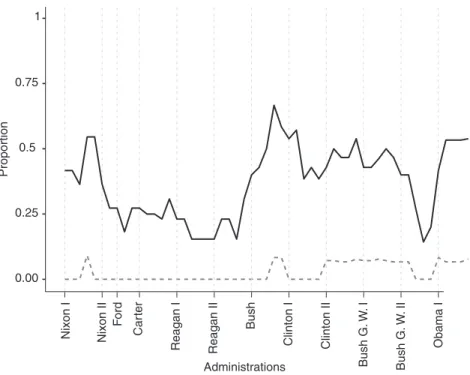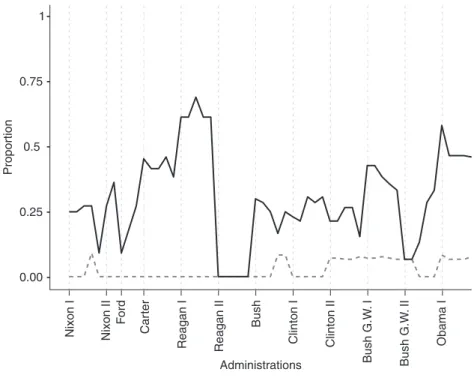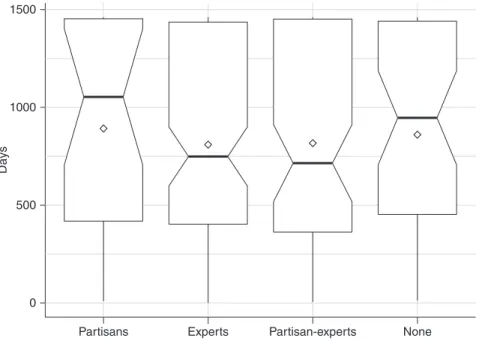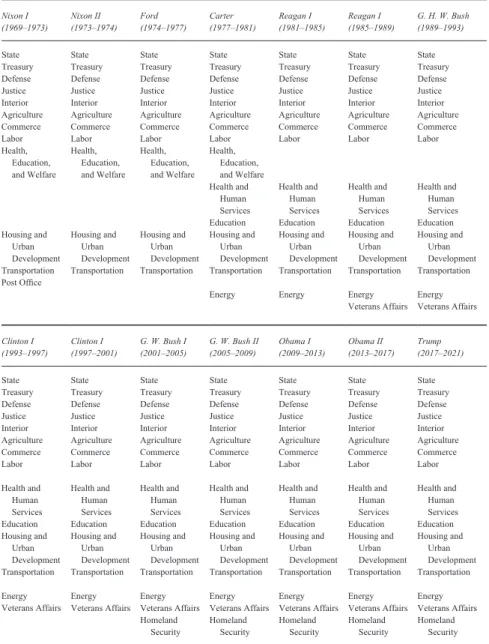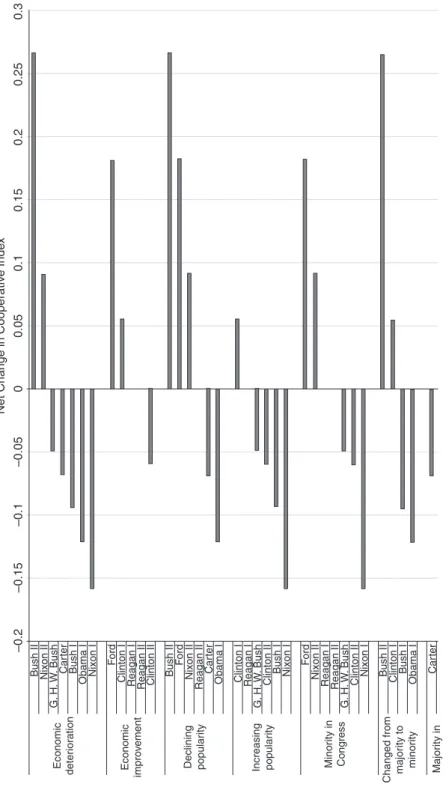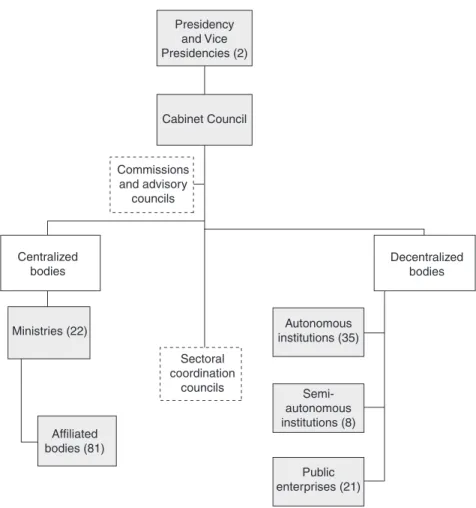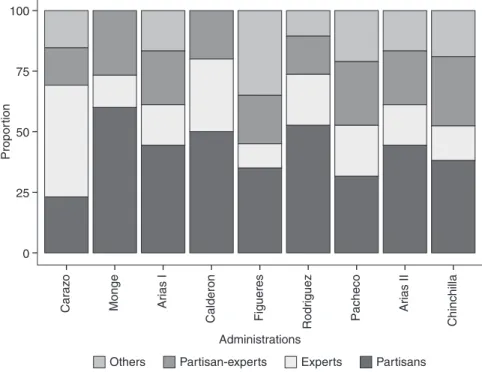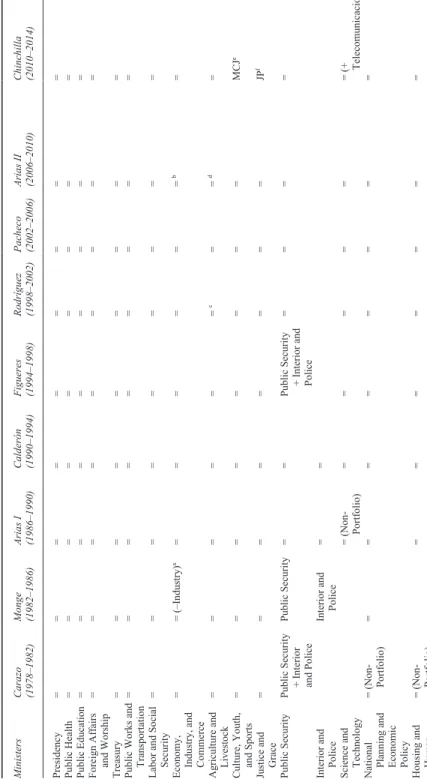The right of Marcelo Camerlo and Cecilia Martínez-Gallardo to be the authors of the editorial material and the authors of their individual chapters has been asserted under sections 77 and 78 of the Copyright, Designs and Patents Act 1988. The catalog record for this book is available from the British Library Library of Congress Cataloging in Publication Data.
Contributors
Luis Bernardo Mejia Guinand ha’e Mbo’ehára Asistente Departamento de Ciencias Políticas Universidad de los Andes Bogotá, Colombia-pe. Gerardo Hernández Naranjo ha'e mbo'ehára asociado Departamento de Ciencias Políticas Universidad de Costa Rica San José-pe.
Acknowledgments
In the end, it is our family that keeps us sane and provides the indispensable moral support to continue this and any other project. To Tomás and Emilia, and to all the sobriahijis: Ignacio, Matías, Clara, Lucía and Nina—.
1 Portfolio allocation in the Americas
Situation C shows cases of ministerial instability in governments and a premature end to the president's term of office (represented by the gray vertical line). 5 With few exceptions (e.g. Ecuador), the number of portfolios and their jurisdiction are defined by law, meaning that a change requires (variably reliable) approval by the legislature.

2 I did it my way
Unlike Latin American constitutions, there is no specific mention of the cabinet in the US. With few exceptions in the US, the end of government coincides with the end of the president's four-year constitutional term.
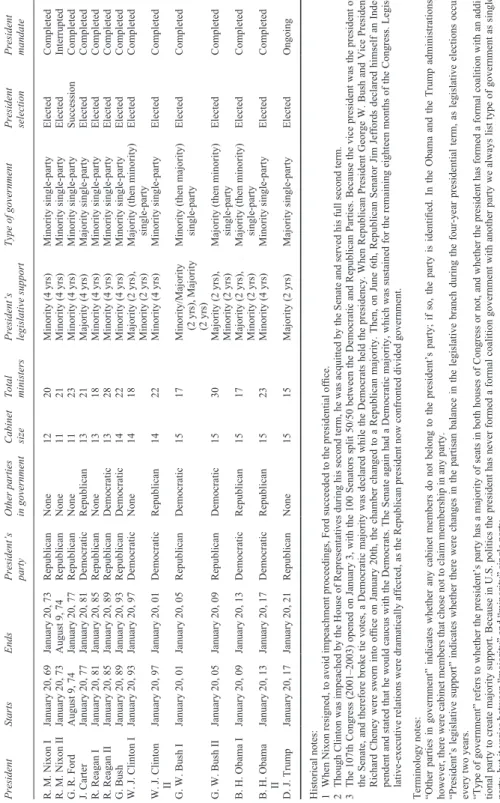
3 Diverse profiles within single- party cabinets
Moreover, even though the President can veto certain laws, issues related to the budget are exclusively within the competence of the Legislative Assembly. Moreover, the Constitution defines the figure of the Governing Council, composed of the president and heads of ministries. These negotiations take place in the period between the elections and the beginning of the mandate.
In contrast, the initial construction of the cabinet varied considerably in the following administration (Monge 1982–1986). The initial formation of the Calderón administration's cabinet shows a strong weighting of ministers with a partisan profile. The third place was occupied by the group PE, which reinforces the partisan criterion in the general construction of the cabinet.
In terms of the use of cooperative or unilateral strategies, there was little change in the ending of governments with respect to the initial cabinet. In the case of the second Arias administration, the turn in favor of E and EP was clear, to the detriment of ministers P. From this it can be concluded that, despite being weak governments, unilateral strategies prevailed in the formation of the cabinets.

4 Parliamentary style
These procedures are often used but never lead to the actual dismissal of the censured minister. 4. After the emergence of the Frente Amplio (Broad Front, FA) in 1971, the two-party system evolved into a moderate multiparty system with three main parties (Buquet and Chasquetti 2008). We argue that the president's legislative needs determine the president's portfolio allocation strategy.
The size of the presidential party appears to be the central variable for understanding presidential nomination decisions. Notes The year of establishment, reform or change of name of the ministry is given in brackets. This political imperative, combined with the cabinet's internal rules, puts strong pressure on the president to make unilateral changes in the Council of Ministers.
Nevertheless, while the former make up almost half of the sample (49 percent), the latter is only one fourth (25 percent). In the previous period, only 5 percent of the appointed ministers (5 out of 95) were party experts (5 percent), but in the subsequent period this ratio increased to 27 percent (39 out of 147). Half of the ministers appointed to the Ministries of Interior, Defense and Economy were politicians of the president's personal trust (forty-four out of eighty-seven).
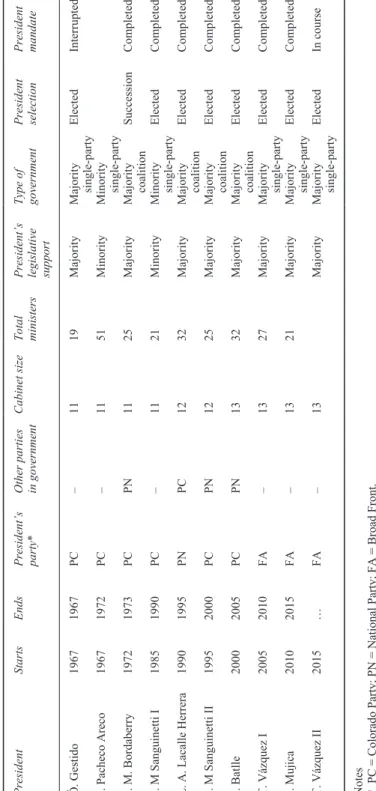
5 Together we govern
In the case of the Concertación, the coalition's size (its number of parties) reduced to four main parties. Until they became ministers, this was the case in the 1990s of the Development Corporation (Corporación de Fomento, or CORFO), the National Women's Service (SERNAM) and the National Environment Commission (CNMA), among others. Sometimes the concern is to maintain a balance between members of the coalition parties if a cabinet member is removed.
The center of the decision-making process was the Ministry of the Interior (whose minister was a member of the RN) and the Second Floor. It shows that the proportions of the different profiles remained much the same during the administration of the Concertación. The main issue that the governing coalition had to resolve in the previous months was the choice of the next presidential candidate.
In the case of the Concertación governments, the issue was generally to try to guarantee a balance between the parties belonging to the coalition. Membership in governing coalitions has been stable over time, due to the effects of the binomial electoral system. Bachelet had a high level of autonomy, placing more emphasis on the government than on the equilibrium of the coalition.

6 Presidentially led coalitions
Executive centrality and the salience of the portfolios influence the size of the prize in the eyes of the parties. A singular experience took place in the one-sided government of Collor, with the centralization of policy-making in the EOP and the simultaneous elimination of the ministries. Then, agreements between the ministers and the presidency define the influence of the parties on the government agenda in the pre-legislative phase (Inácio, 2012).
Changes in the government at the beginning of the second mandate are timely and implemented in the first year. The most important changes in the size of the cabinet are realized at the inauguration of the government, signaling. With the establishment of the Ministry of Planning and Budget, centralized in the EOP, he strengthened the budgetary control of the policies of the ministries.
Ministers with weak or no party affiliation and those from the president's party are considered the president's "own people" and account for the share of unilateral appointments in the government. These appointments correspond to 213 out of 448 ministers selected from the president's party (49 percent) or from other parties (52 percent). The extraordinary number of hybrid ministers also points to the basket of the president's needs.
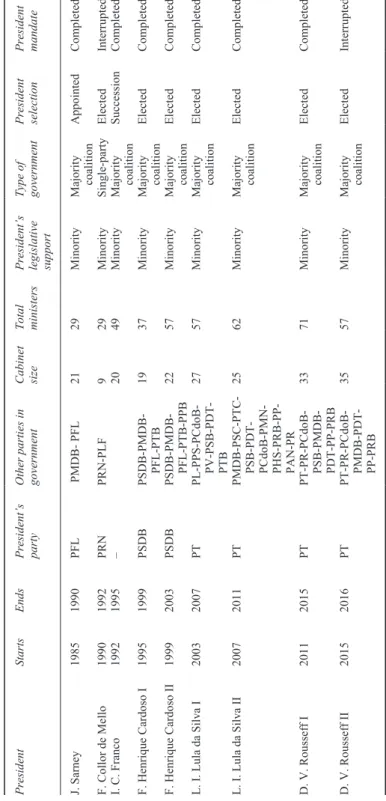
7 Bait and switch?
Even when the constitutional powers of the executive branch are favorable, partisan powers often severely compromise the president's ability to enact legislation. To understand the characteristics of the cabinet, it is important to consider the structure of the Executive in Colombia. During the first decades of its existence, the presidency was extremely simple.
In practice, however, the vice president's most important function was an electoral one. Administrative departments and ministries have a utilitarian relationship, with the exception of the National Planning Department (NPD). This instrument is the President's ability to change the structure of public administration, in particular that of the Presidential Office (Departamento Administrativo de la Presidencia de la República, DAPRE).
However, these ministers have a dual allegiance: they are agents of the president and of their parties. However, the evolution of the party system itself affects the possibility of the president's party - or any party for that matter - achieving a majority in Congress. UP militants are believed to have been killed, leading to the virtual extinction of the party.
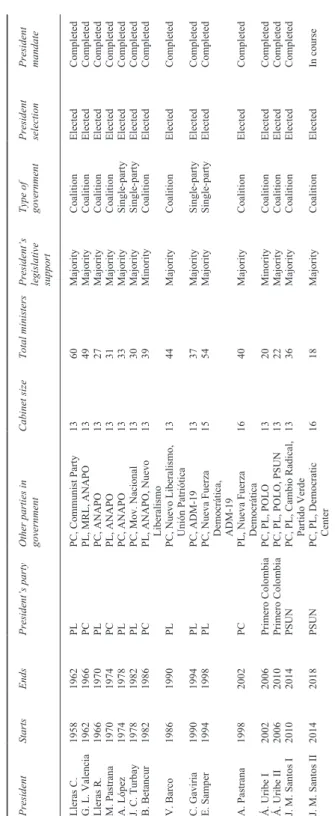
8 Cooperative but non- partisan
The evolution of the political system in Peru in the post-transition era is marked by three important periods. However, the "prime minister" is clearly subordinate to the president's policy directions and initiatives. There has been a trend toward greater collaborative strategies for presidents since the collapse of the party system in the early 1990s.
However, Peruvian presidents have had weak party powers since the collapse of the party system in the early 1990s. Most ministers appointed during this period belonged to presidential parties (Acción Popular between 1980 and 1985; and APRA between 1985 and 1990). The collapse of the party system and the election of Fujimori significantly transformed the dynamics of portfolio distribution in Peru.
However, heads of government in Peru lost extensive partisan powers after the collapse of the party system. The collapse of the party system in Peru made it impossible for presidents to gain political support by appointing members of other political parties to the cabinet. The erosion of the party system also had an impact on the power of Peruvian presidents.

9 Unilateral, against all odds
The third section discusses some explanations for the repeated use of unilateral strategies by Ecuadorian presidents. Ecuador and identifies a number of pending themes for future research in the study of cabinet formation in presidential regimes. Since re-democratization, two major periods have characterized the Ecuadorian political system: from 1979 to 2007, when presidents governed with constitutions that gave them fewer institutional powers and faced minority legislative support and suboptimal economic conditions, and from 2007 to In In 2015, when the president governed with a constitution that granted him greater legislative powers, he enjoyed the support of the majority party in Congress and benefited from relative economic success.
Unlike Argentina or Chile, the armed forces played a leading role in the transition back to democracy. However, despite more than 35 years of civilian rule, democratic consolidation has been elusive and the country has experienced its fair share of political instability during this democratic period. Perhaps most strikingly, the party system evolved during this time from one of the most fragmented in the world to one in which the Alianza Patria Altiva I Soberana (Alianza PAIS or Country Alliance) controlled more than 70 percent of legislative seats (Pachano, 2008 ).
During the period 1979–2007, coalition governments were generally temporary and public policies unstable due to the large number of political veto players and the absence of governments with sufficient legislative representation (Mejía. Acosta, 2009; Mejia Acostond Polga-Hecimovich, 2011). Moreover, public. Moreover, actors with informal veto rights, such as social organizations and the National Indigenous Confederation (Confederación de Nacionalidades Indígenas del Ecuador, CONAIE), created a context in which uncertainty, social unrest, and a lack of long-term agreements marked the political system. .
